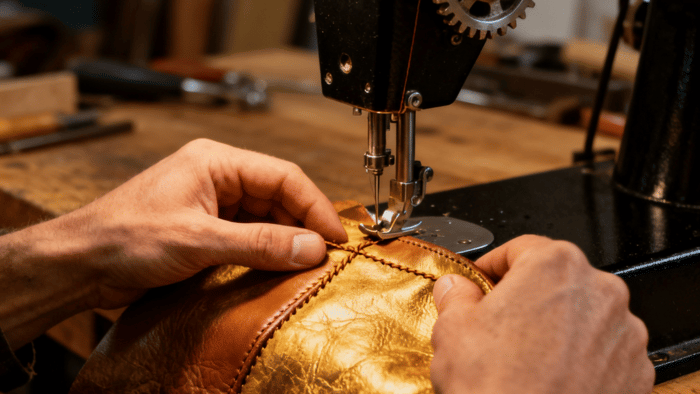Crafting Strength in Every Seam
In a world where handmade quality often competes with digital speed, craftsmanship reemerges as a quiet form of rebellion. The hum of a workshop, the rhythm of steady stitching, the feel of durable materials meeting the precision of skilled hands — this is where resilience is built one thread at a time. From leather artisans to industrial designers, the movement toward slow, strong creation carries a kind of poetry that technology alone cannot replicate. Machines like the Cobra Class 26 become symbols of this balance between the mechanical and the human: practical tools shaped by people who understand the language of materials and time.
The essence of modern craftsmanship lies in intention. To make something that lasts is an act of foresight. Each stitch, cut, and contour tells a story of what was made and why it matters. In workshops worldwide, a shift is quietly taking root — the idea that simplicity and endurance define modern value more than excess or speed ever could. Whether crafting saddlery, footwear, or rugged gear, creators find innovation through discipline rather than disruption.
Today’s makers are bridging tradition and precision engineering to equally celebrate texture, durability, and form. It’s not about nostalgia but redefining permanence in a world obsessed with the temporary. That pursuit requires patience — the kind that doesn’t chase perfection but earns it through consistent attention. As industries chase efficiency, a different kind of mastery evolves in forgotten corners where artisans still listen closely to their materials.
Midway through this shift, the lessons of leatherworking reveal something universal: the value of tension. The Cobra Class 26 — modest in appearance yet powerful in performance — exemplifies that principle. The right tension in thread or mindset creates harmony between strength and flexibility. It’s not just about machinery; it’s about philosophy. The hidden beauty of tension lies in how it refuses compromise. Too loose, and work falls apart; too tight, and it snaps. Within that narrow margin, makers find excellence.
Durability, at its core, reflects respect for the craft, the user, and the passage of time. Products built to last not only resist wear; they embody care. That principle extends beyond physical goods into how modern professionals think about creation. Sustainability isn’t a slogan when it’s stitched into the origin of every design choice. The smallest detail — a reinforced seam, a clean edge, a precise finish — becomes a statement of responsibility.
Tools alone don’t create quality; intention does. The mechanical heart of any workshop is only as effective as the discipline of the hands guiding it. The makers committed to this approach rarely chase recognition. Their reward lies in knowing their work holds up to pressure — literally and figuratively. They create not for mass appeal but for functional beauty. In a world that often rewards shortcuts, doing things right, even when unseen, becomes a quiet form of leadership.
This mindset isn’t limited to leather or textiles. It applies to architecture, engineering, design — any field where form meets longevity. The return to tactile skill in the digital era reflects a growing hunger for authenticity. The more data-driven creation becomes, the more individuals seek grounding in the tangible and real.
In that sense, craftsmanship is less about nostalgia and more about renewal. It asks us to look closer, slow down, and rethink what progress means. The future of durable design will belong to those who carry forward the humility of makers — balancing precision with patience. Strength in every seam is not just a metaphor for product integrity but for personal mastery as well. When we build thoughtfully, whether in material or mindset, we craft something rare: the capacity to endure.
